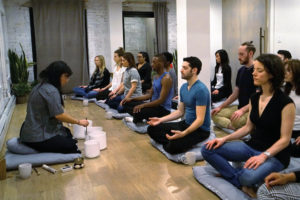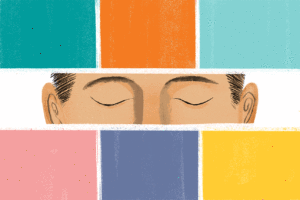
Meditation is a simple practice available to all, which can reduce stress, increase calmness and clarity and promote happiness. Learning how to meditate is straightforward, and the benefits can come quickly. Here, we offer basic tips to get you started on a path toward greater equanimity, acceptance and joy. Take a deep breath, and get ready to relax.
Meditation Exercises
Find a comfortable spot and get ready to relax.
Setting aside time for formal meditation is an important way to establish a routine and get comfortable with the practice. Even just a few minutes a day can make a big difference.
It’s inevitable: During meditation, your mind will roam. You may notice other sensations in the body, things happening around you, or just get lost in thought, daydreaming about the past or present, possibly judging yourself or others.
There’s nothing wrong with this — thinking is just as natural as breathing. It’s the natural conditioning of the mind to wander.
When this happens, simply notice what it is you were thinking about or what was distracting you, then take a moment and pause.
You don’t need to pull your attention right back to the breath. Instead, let go of whatever it was you were thinking about, reopen your attention, then gently return your awareness to the breath, being present for each inhalation and exhalation

1. MINDFULNESS MEDITATION PRACTICES
4 minutes practices
10 minutes practices
15 minutes practices

2. BODY SCAN MEDITATION PRACTICE
Instead of training your attention on the breath, as is the case in basic mindfulness meditation, the body scan involves systematically focusing on different sensations and areas, from the head to the toes.
Start at the top of your head. Slowly and deliberately, bring your attention to the surface of your skin, one inch at a time. See if you can feel your scalp, your ears, your eyelids and your nose. Continue in this manner, moving across the face, over the ears, down the neck and shoulders and all the way down to your toes.
At first, it might seem as if you don’t feel anything at all. But as you progress, you might begin to notice a whole world of new sensations. Some of the feelings might be pleasant, a gentle warmth, a comfortable weight. Some feelings might be neutral — tingling or itching. And some might be unpleasant. Your feet might feel soreness somewhere.
Whatever the sensation is, just note it. If you need to move to relieve real pain, do so. But try not to react — labeling the experience good or bad — even if it’s unpleasant. Instead, just acknowledge what it is you’re feeling, and continue with the body scan. And of course, if you realize your mind has wandered, simply note the thought, and return your attention to the body.
Leave a Reply